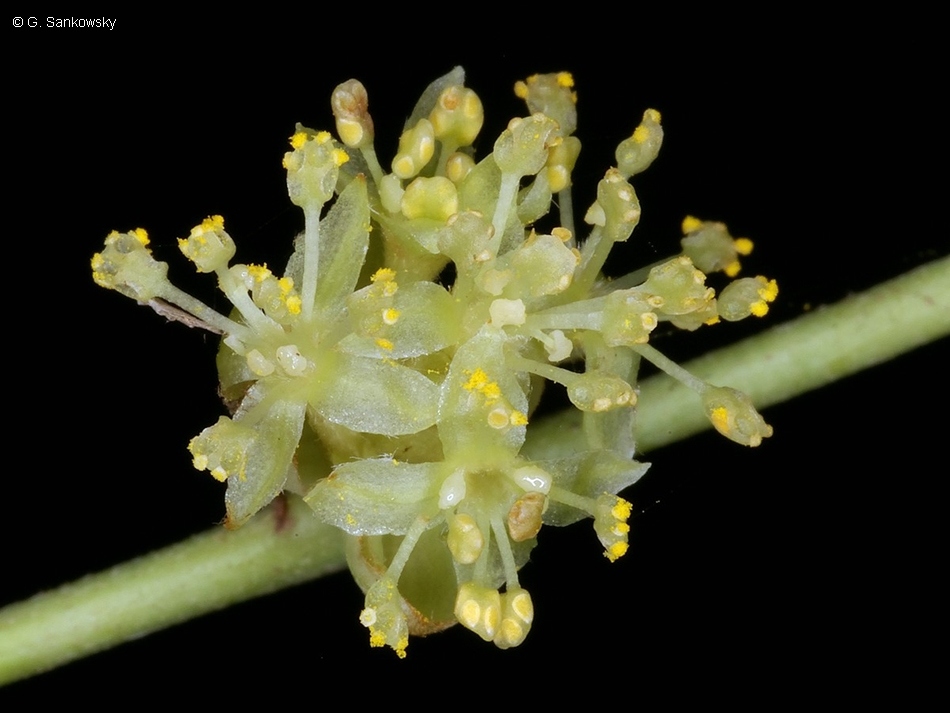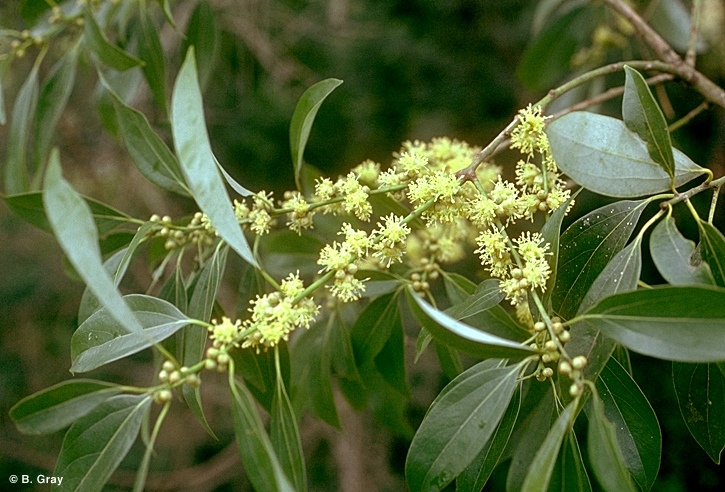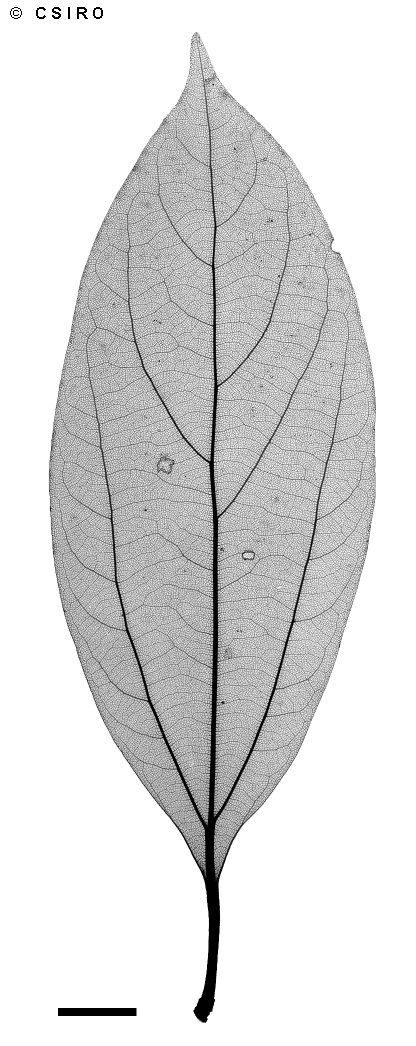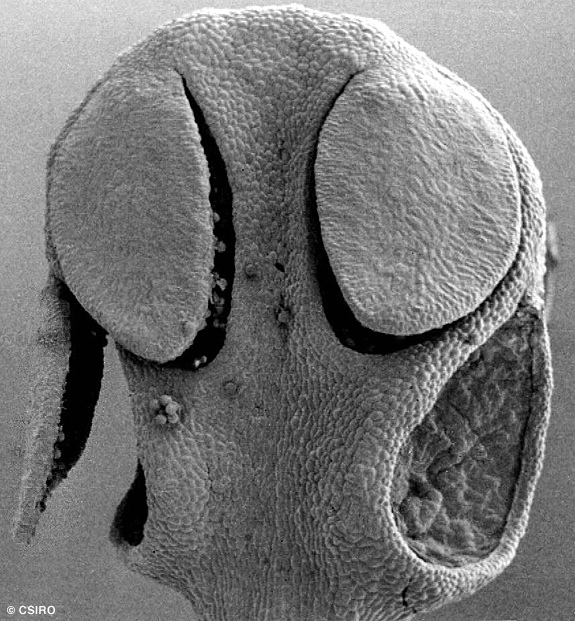Australian Tropical Rainforest Plants - Online edition
Neolitsea brassii C.K.Allen








Allen, C.K. (1942) Journal of the Arnold Arboretum 23: 118. Type: British New Guinea: Western Division, Tarara, Wassi Kussa River, Brass 8704, Jan. 1937; holo: A.
Grey Bollywood; Bollywood, Grey; Bollywood
Seldom exceeding 30 cm dbh. Blaze odour difficult to describe, usually obvious, sometimes pleasantly scented.
Twigs usually +/- terete, sometimes slightly fluted, clothed in straight, white, appressed hairs when very young, soon becoming almost completely glabrous. Leaf blades about 6.5-15.5 x 2.5-7.1 cm, usually slightly glaucous on the underside, sometimes green, clothed in straight, white, appressed hairs when young, soon becoming almost completely glabrous. Midrib raised or flush with the upper surface. Petioles channelled on the upper surface. Oil dots visible with a lens.
Inflorescence bracts present at anthesis. Male flowers: Tepals about 2.3-3.4 mm long, usually without a pistillode. Stamens usually six (sometimes 5-8). Female flowers: Tepals about 2.4-2.8 mm long. Glands attached to the middle of the inner staminodes. Ovary glabrous.
Fruits globular, sometimes ellipsoid, about 9-12 x 7.5-10.5 mm. Receptacle about 7.5-9.5 x 4.5-5.5 mm. Seed about 6-9.5 x 5-8 mm. Cotyledons cream.
First pair of leaves ovate to lanceolate, about 30-53 x 13-24 mm, glaucous to white on the underside. At the tenth leaf stage: leaves elliptic to ovate, apex acuminate, glabrous on the upper surface, glaucous on the underside; leaves alternate or in whorls of three; oil dots small, visible only with a lens; petiole and terminal bud glabrous. Seed germination time 40 to 161 days.
Occurs in NT, CYP, NEQ, CEQ and southwards to south-eastern Queensland. Altitudinal range from sea level to 900 m. Grows in rain forest, monsoon forest and wet sclerophyll forest on a variety of sites. Also occurs in New Guinea.
This species seldom grows large enough to produce millable logs. Wood specific gravity 0.76-0.81. Hyland (1989).





